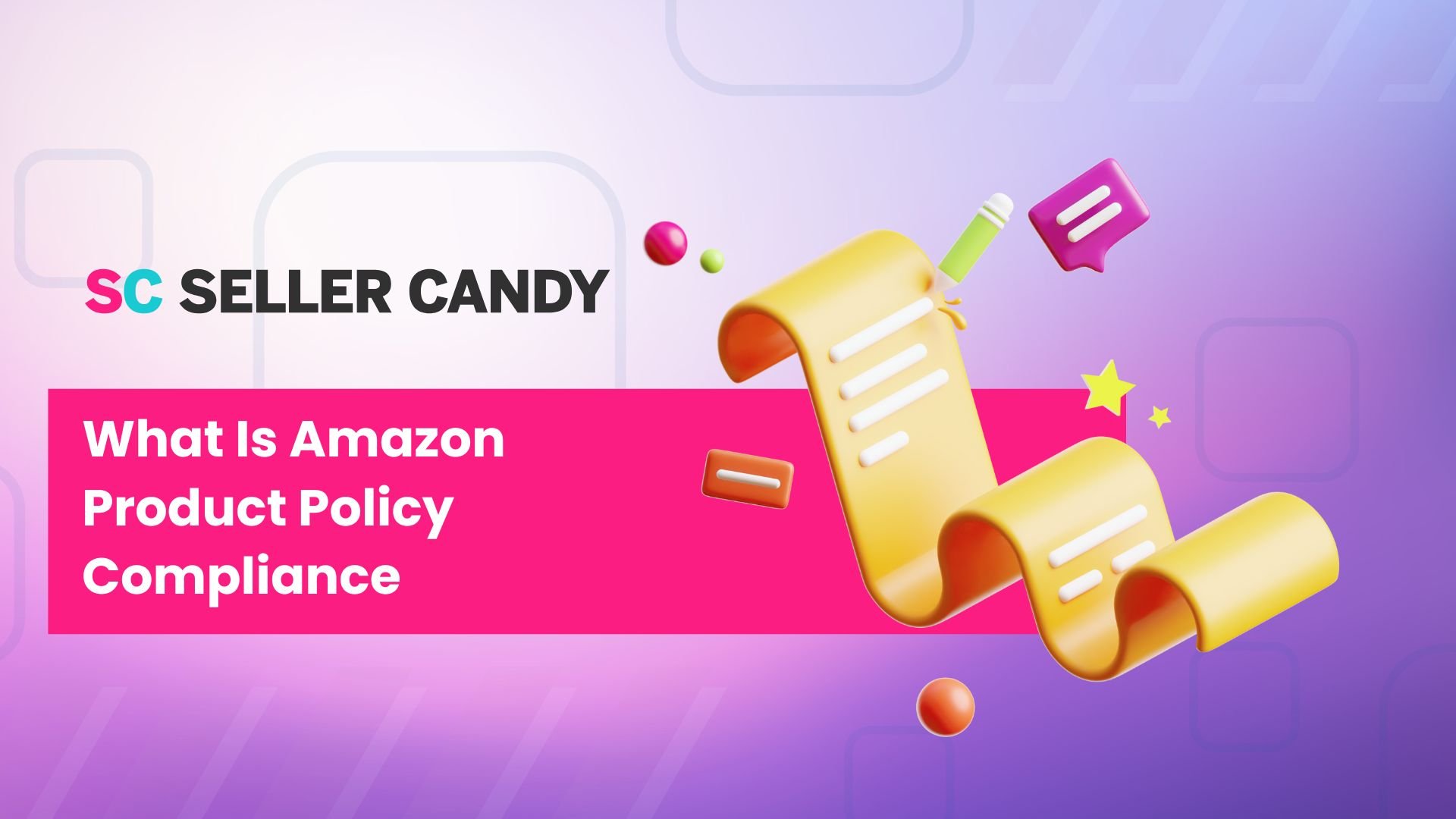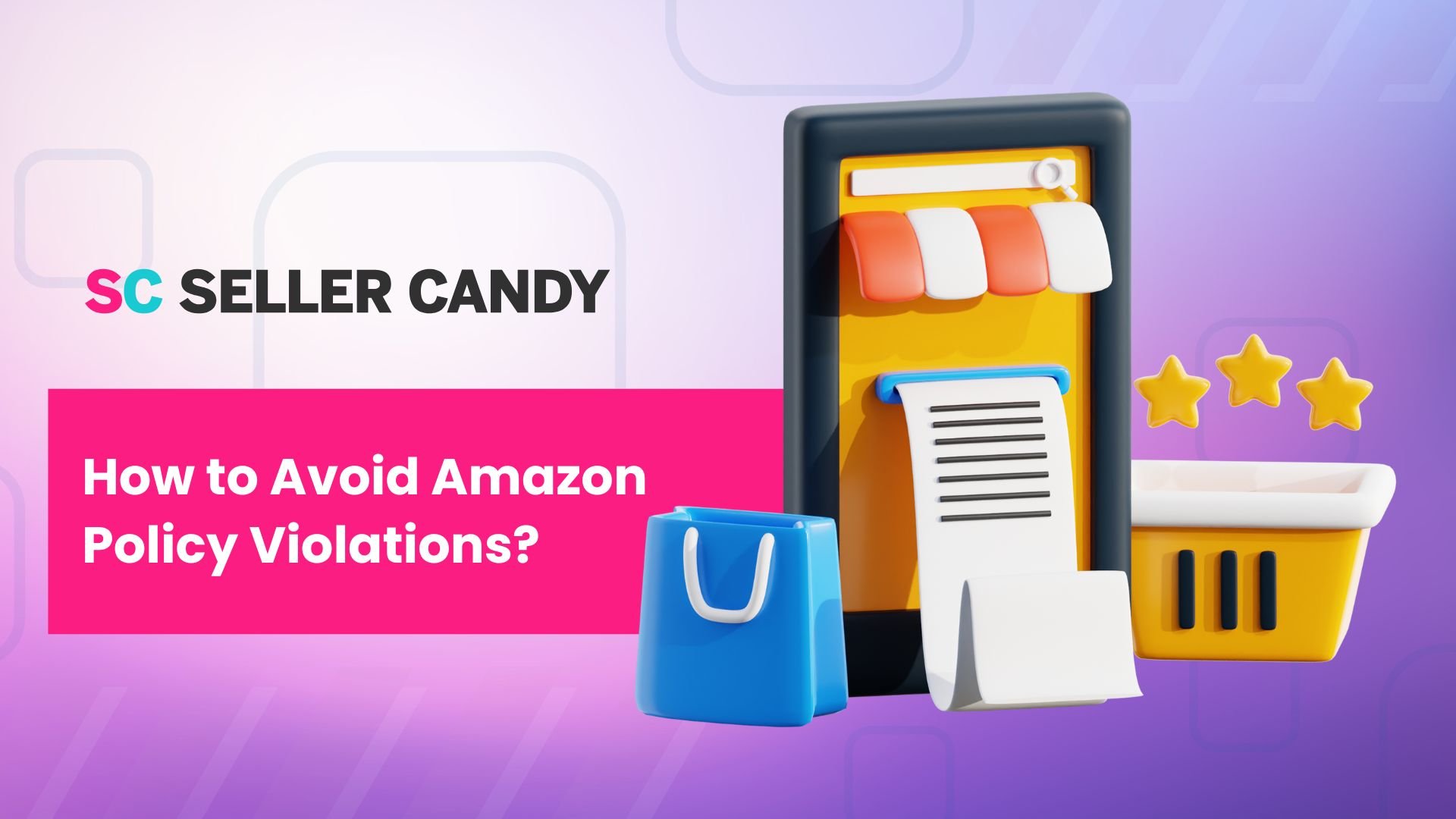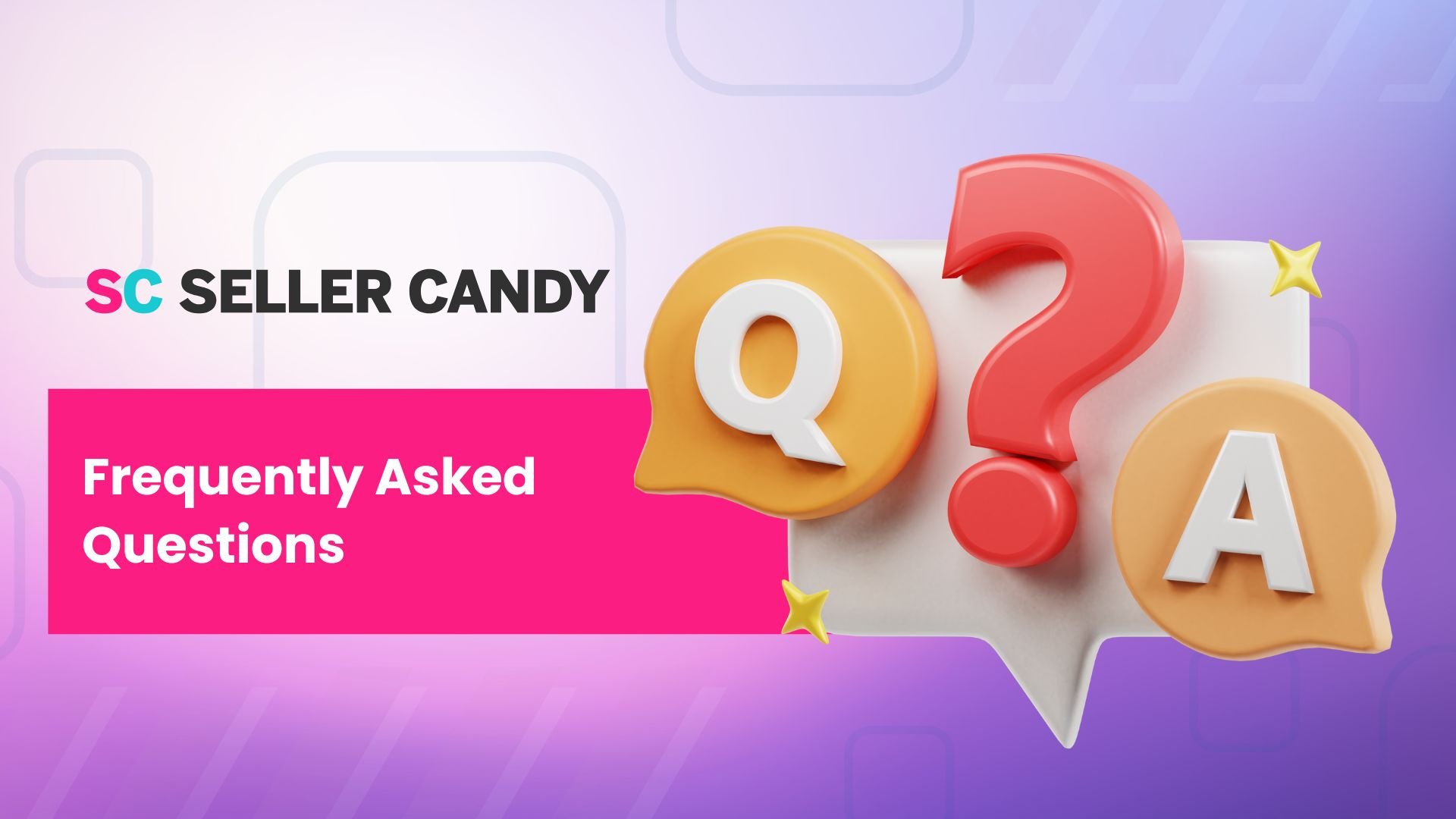Ultimate Playbook for Fixing Amazon Listing Policy Violations in 2025
When you decide to sell on Amazon, you're signing up to play by their rules. If you want to make it big, you must avoid Amazon listing policy violations.
It’s super important to get your product page right. A well-done listing can convince buyers to choose your product. It helps set clear expectations, leading to happier customers and fewer complaints. Most importantly, it needs to follow Amazon's rules.
More sellers are getting into trouble because they are not following these rules. Common policy mistakes involve violating intellectual property (IP) rights or selling items that Amazon restricts.
If you don’t follow the rules, Amazon could remove your products or suspend your account. In that case, you'll need to submit a policy violation appeal.
Here's the good part: We're about to discuss policy violations and how to avoid them. Plus, we've got your back with actionable steps for when Amazon flags your account or listings.
Get ready to navigate Amazon's policies like a pro and keep your selling journey on track!
What Is Amazon Product Policy Compliance

Amazon has rules to ensure that products sold on its platform are good for customers, safe, and not harmful. Following Amazon's seller code of conduct is key to being a successful Amazon seller.
Amazon reminds sellers that they must follow Amazon's brand policy rules and also the laws of their area and country. It's up to sellers to check that their products and how they sell them don't break any rules.
If you get a message from Amazon about breaking a rule, you must reply quickly. This could mean someone has made a complaint against you, or you haven't followed Amazon's policies correctly.
How to Know if You Violated Amazon Policies
If you accidentally break any of Amazon's product rules, they will inform you through the Seller Central account health dashboard. You must check this dashboard often to maintain a healthy Amazon account.
Where is the Account Health Dashboard in Seller Central
To check if your account is in good standing, head over to the 'Account Health' section under the 'Performance' tab in Seller Central. You can see if you have any violations under the account health dashboard's product policy section. If you see zeros against all violation categories, you're all good!
Amazon updated their Account Health Dashboard to make things clearer. Now you'll find a "Policy Compliance Score" and new sections like "Regulatory Compliance Violations" that give you a better picture of how well you're following their rules.
However, Amazon's system has become more automated in flagging potential violations. Even if you haven't had previous issues, listings may be flagged for review due to sudden sales spikes, keyword triggers, or changes in compliance policies. Monitor the dashboard daily to catch and resolve issues before they escalate.
What Are the Categories of Product Policy Violations

Product policy violations on Amazon can include problems with intellectual property, doubts about product authenticity, issues with the product's condition, and other breaches of Amazon's rules.
Amazon lists several types of policy violations:
- Suspected intellectual property violations;
- Received intellectual property complaints;
- Product authenticity customer complaints;
- Product condition customer complaints;
- Product safety customer complaints;
- Listing policy violations;
- Restricted product policy violations and
- Customer product reviews policy violations.
Suspected Intellectual Property Violations
Suspected intellectual property (IP) complaints occur when Amazon thinks you might wrongly use someone else's IP rights. These complaints aren't directly from the rights owner. Amazon notices something off and suggests you might be stepping on a brand's IP rights.
Reason for violation: Amazon will warn you about suspected IP complaints if they believe your product listing infringes on someone's intellectual property rights.
What happens next? Usually, Amazon automatically sends the suspected IP violation notice, and they might deactivate your product listing.
Advice: Often, suspected IP violations occur because you used the wrong brand name in the product title or brand field. For example, if your product listing title says “iPhone accessories” but isn't an official Apple product, this could be a problem. If you fix the brand name in your listing, Amazon might reactivate it automatically.
Simply correcting the brand name may no longer be enough. As of 2024, Amazon requires additional proof, such as a Letter of Authorization (LOA) from the brand owner or official documentation confirming resale rights. Without these, Amazon may keep the listing deactivated.
Received Intellectual Property Complaints
Received intellectual property complaints happen when the owner of a brand or IP rights tells Amazon your listing is using their property without permission.
Why you're warned: A brand owner claims you're using their IP rights without permission in your listing.
What could happen? If you ignore Amazon's policy warnings, they might deactivate your listings or even your Amazon account.
Advice: For received IP complaints, contacting the rights owner is ideal, but Amazon no longer requires a brand authorization letter in all cases. Instead, Amazon may accept:
- Proof of purchase (e.g., invoices from an authorized distributor or manufacturer)
- Trademark registry or brand licensing documentation
- A well-written Plan of Action (POA) explaining how you will prevent similar issues in the future.
If Amazon denies your first appeal, escalate to Seller Performance or use Amazon’s Brand Registry contact tools for further resolution.
Product Authenticity Customer Complaints

Product authenticity complaints happen when customers tell Amazon they think your product is fake. Amazon sees these issues as intellectual property violations.
Why it's a problem: Just because there's a complaint doesn't mean your product is fake. The customer might have made a mistake, been unhappy with the packaging, or thought your product looked too much like a brand-name item and assumed it was a counterfeit.
What happens if you ignore it? If you don't respond to a claim that your product is not authentic, Amazon might deactivate your listing.
What you should do: Amazon expects you to ensure that all products you sell are legal and allowed to be sold. Check where your products come from, confirm they are genuine, and keep all your purchase records, such as orders and receipts. You'll need these if you have to show proof to Amazon.
Previously, sellers could request an FBA bin check, but Amazon no longer allows manual bin checks in most cases. Instead, sellers must provide detailed supplier invoices, product certification documents, and brand authorization letters. Amazon now relies on purchase documentation and seller-provided evidence rather than manual inspections.
Product Condition Customer Complaints
Customer complaints about product condition mean a customer has reported that the product they got doesn't match what was described online.
Why it happens: A customer might complain if they buy something listed as "New" that looks worn, is damaged, or seems used in some way. In some cases, customers don't react to the product as expected and assume it’s defective, even when it meets listing specifications.
What could happen? If you ignore complaints about the product's condition, Amazon might stop showing your product.
Advice: Always check your products before you send them to Amazon or directly to the buyer. Pay attention to what customers say in their feedback and ensure your product descriptions are accurate.
Product Safety Customer Complaints
When customers complain about product safety, it means they've told Amazon they think a product is unsafe or doesn't meet safety standards.
Why it happens: Safety standards often change, and sometimes, product safety complaints might not actually be about the product's safety. They could be due to the product being damaged or appearing used.
What to do next? You usually have to write an appeal letter about the violation. But you can't do that if you're missing any important documents.
Amazon often requires sellers to provide official safety compliance documents for product safety complaints rather than just an appeal letter. This can include:
- Lab test reports from certified testing agencies
- Regulatory compliance certificates (e.g., UL, CE, FDA approval, depending on the product category)
- Proof of safety instructions and labels
If Amazon considers the product a potential safety risk, it may suspend the ASIN immediately until documents are submitted and reviewed. Failing to provide the required documents can lead to permanent listing removal.
Advice: If you get a warning from Amazon about this, send them a Plan of Action and follow their steps to get your product listed again.
Listing Policy Violations

Why you're warned: You might get a warning for having duplicate listings, creating variations that don't follow Amazon's rules and more. Also, certain products can't be listed, like promotional samples, products expiring soon, or items that can't be sold.
What happens next? If Amazon suspends your listing, you'll likely need to appeal. This means you need to write a plan of action (POA). If you don't respond to warnings about your listing, Amazon might remove it.
Advice: If Amazon takes down your listing, you should file a listing policy violation appeal in response.
Ultimately, for any listing policy violation, another thing you can do is remove trigger words from your listing. Trigger words can cause Amazon to deactivate your listing even if you, in fact, didn’t violate any rules.
Restricted Product Policy Violations
Restricted products are items that you need Amazon's permission to sell. You have to apply to get approval for these products.
Why this matters: Amazon keeps lists of categories and brands that are restricted or you can't sell in Seller Central. These restrictions can be different in each marketplace and may change over time. You need to keep checking for any updates. Sometimes, new restrictions can affect products you're already selling.
What could happen? Amazon may ask you to remove listings for restricted products. You might need to show that your product is officially licensed or bought from an approved distributor. If you don't remove a restricted listing, Amazon might deactivate your selling account.
Advice: Amazon no longer automatically displays approval forms for all restricted products. Sellers must now manually apply for approval through Amazon’s Category Approval Process. Some categories require additional documentation, such as supplier invoices, compliance certificates, or proof of brand authorization.
Customer Product Reviews Policy Violations
If you violate Amazon's customer review policy, you've broken their review rules.
Why it's a problem: Amazon doesn't allow sellers to review their products or those of competitors.
Amazon’s AI now strictly monitors review manipulation and can flag:
- Fake orders for reviews ("brushing") – Sending free products to random buyers can result in permanent account suspension.
- Large discounts for reviews – Offering over 50% off in exchange for reviews may be seen as manipulation.
- Asking for reviews outside Amazon – Contacting buyers through email or social media to request reviews can lead to a seller account ban.
To stay compliant, always use Amazon’s "Request a Review" button instead of reaching out personally.
What will Amazon do about it? If Amazon thinks you're tampering with reviews, they'll delete them and your product listing. They might also suspend or permanently block your account.
What to do: Don't try to trick the system with fake reviews. If you get a bad review, reach out to the customer to fix the problem. You can also respond to the review publicly, so others see you're trying to solve the issue.
Enrolling your products under Amazon Vine is another good way to appear authentic or get better reviews. Amazon Vine requires products to be new (not used or refurbished) and have fewer than 20 reviews at the time of enrollment.
Sellers need to submit at least one unit per ASIN, though sending 10 or more is recommended for better results. Variations are no longer accepted, so each size, color, or model must be enrolled separately.
How to Avoid Amazon Policy Violations?

To avoid Amazon policy violations, you must check the product history to ensure it hasn't caused issues for other sellers.
Seller Candy can help you with this. We offer services tailored to prevent policy violations, including handling Intellectual Property Violations and ensuring compliance with Listing and Restricted Product policies.
We’ll help you monitor and address any potential issues that could affect your account's health, and we'll ensure that your products comply with Amazon's standards.
How to Address Amazon Policies Violations
If Amazon tells you about a policy violation, respond quickly. Amazon often tells you what to do next.
The actionable steps for each item are in your account health dashboard's 'Next Steps' column, where you'll see the type of violation and recommended actions.
Let's look at how you can submit successful Amazon policy violation appeal letters:
Step 1. Look closely at the details of the violation to understand why it happened.
Step 2. Prepare your appeal letter and all needed documents. This usually includes a Plan of Action (POA), invoices from your supplier, and other details.
Step 3. Send your appeal letter, Plan of Action (POA), and documents as soon as possible. Amazon now requires a response within 12-24 hours for serious violations to avoid immediate deactivation. If sellers delay their appeal, reinstatement becomes more difficult, and the violation may impact the Account Health Rating.
Your Plan of Action should cover:
- The main reason for the violation;
- Steps you'll take to fix the issue;
- Steps you'll take to avoid the problem in the future.
Step 4. Wait for an update from Amazon—response times vary:
- Minor violations: Typically reviewed within 5 to 7 business days
- Serious violations (counterfeits, safety issues, IP complaints): May take up to 14 business days
- Escalated appeals: If Amazon rejects the first appeal, sellers should escalate to Account Health Support to avoid prolonged deactivation.
Step 5. Provide more information if Amazon asks for it.
Note: Your account health dashboard will show the policy violations until you can show Amazon that you've fixed the problems. You can submit successful appeal letters with a POA.
These violations remain visible for up to 180 days but will not affect you after you fix the issue.
If Amazon rejects your appeal, escalate the case by contacting Seller Performance or opening a case through Amazon’s Account Health Support team for further review.
FAQ

How Can You Improve Product Visibility on Amazon?
To boost your product's visibility on Amazon, optimize your titles, bullet points, and descriptions with keywords. Also, consider sponsored ads and Amazon’s A+ Content.
What to do if Your Amazon Seller Account Gets Suspended?
If Amazon suspends your seller account, first understand why by reviewing Amazon's email. Then, create a plan to fix the issue and appeal. If Amazon rejects your appeal, contact Seller Support.
Can You Sell Internationally on Amazon?
You can sell your products on Amazon in different countries. First, you will need to consider shipping, language, and laws carefully. Look at Amazon’s Global Selling program and tools, such as the currency converter and translation services.
One crucial thing for international selling on Amazon is that the items may not be restricted in the US but can be restricted in CA, the EU, or the UK, so you need to look out for that.
How Does Amazon Deal With Counterfeit Products?
Amazon has a zero-tolerance policy for counterfeit products. If a listing is flagged as counterfeit, Amazon may immediately remove the ASIN and suspend the seller’s account.
What to do if Your Product is Mistakenly Identified as a Prohibited Item?
If Amazon wrongly marks your product as prohibited, immediately contact Amazon Seller Support. Give them all the details and proof that your product follows Amazon’s rules.
How Often Should You Review Amazon’s Policy Updates?
Subscribe to Amazon’s official compliance alerts and Seller Central notifications to receive real-time updates. Amazon frequently adjusts policies, and missing an important update could lead to policy violations or listing suspensions.
Final Word
You must respond quickly and correctly if you receive a warning about an Amazon listing policy violation. But it's even better to avoid these violations in the first place by being proactive.
Ensure you know Amazon's rules for creating and updating product details pages. It's really important to get this right because Amazon might not give you many chances to fix mistakes.
You can check how well you follow the rules on the Account Health page in Seller Central under the "Performance" menu. If Amazon sends you a warning, try to fix the problem fast.
If you need help, we are here to provide you with all the support you need. Our team has years of experience helping Amazon FBA sellers avoid and handle policy violations at all levels.
If you have questions about our services or about selling on Amazon, feel free to contact us today.

